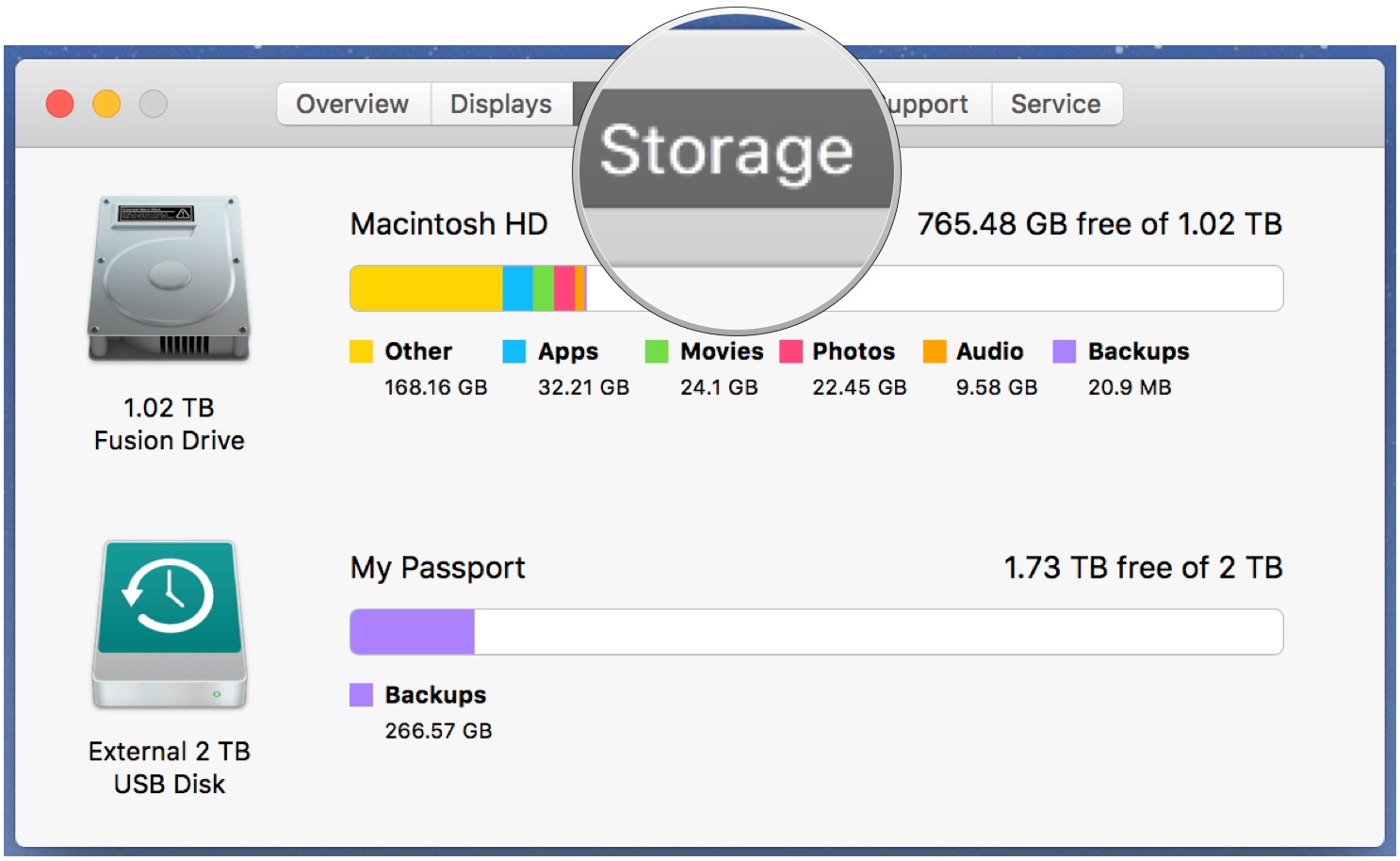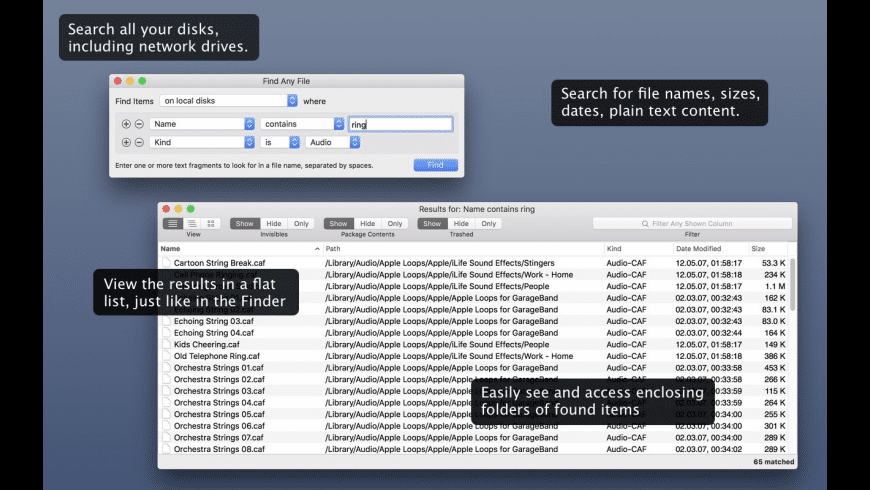- Using OS X's Finder, you can do some fancy-schmancy advanced searching, including finding system files for troubleshooting. No more rooting through folders when the results you want aren't.
- Mar 29, 2019 How to Search for File Types in Finder on a Mac. This wikiHow will teach you how to search Finder for files by type on a Mac. Open a Finder window.
To locate a file by using the Find controls, follow these steps: With the Finder active, display the Find controls by pressing Command+F (or choose File from the Finder menu and then choose Find). Mac OS X displays the controls that you see here. Click the buttons. My Rec ommendation for Alfred. My Recommendation for Alfred. Add Video or Image.
No matter how much space you have on your Mac, one day, you may see “Your disk is almost full” notification. Even if it seems like there is no app or program that would take a considerable amount of storage, the large files may be hidden deep down in your Mac’s memory. Keep reading to discover how to locate such files on your Mac and delete them for good.
Scan the most obvious place
When looking for large files on their Macs, users often start scanning a bunch of folders stored on their machines. But, usually, the most common destination of all large files is the Downloads folder. You may automatically download thousands of files and forget to remove them. So, checking the Downloads folder on your Mac may help you find lots of forgotten large files and documents that you don’t need anymore.
Looking for the large items may take some time. Free tools, like CleanMyMac X, can accelerate the process by scanning your Mac’s memory and detecting large files. The only task left for you will be to remove the found files all at once.
Find large files using Finder
Another way to search for large files is by using search filters in Finder. It can help you locate the biggest files on your Mac. Here’s how to find large files using Finder:
- Open Finder.
- Find the Search field in the top right and click it.
- Click the Settings symbol and select Show Search Criteria.
- In the list of search filters on the left, choose Other.
- In the window that appears, select File Size and click OK.
- In the second space, select Is greater than and enter the size in the third space.
- Choose KB, MG, or GB in a final filter field.
Remember to select This Mac to get a full list of results. You will then see all files which size is greater than you defined. Look through the found documents and remove unnecessary items that take too much space on your Mac.

Although, this method has certain disadvantages. Finder doesn’t give you a full picture of the large files stored on your Mac. It shows only single files, excluding large folders that comprise a lot of smaller items.
It’s also unclear which files you can safely delete without risk of removing important documents. Finder neither provides any additional information about files nor shows which folder the file belongs to. So, it’s difficult to decide whether the large file is important or not.
Continue reading to discover how to find the largest files on your Mac using other methods.
Find large files using the Storage Management app
Another solution is to use the built-in Storage Management app.
- Choose Apple menu.
- Select About This Mac.
- In the window that appears, click Storage. Here you can see how much free storage you have and view the amount of space used by different categories.
- Click Manage.
- As the Storage Management app opens, select Documents.
- Browse the Large Files to delete those you don’t need.
Click any file to see its path at the bottom of the window. The Storage Management app also shows the exact size of each document as well as the date you opened it last.
Apple provides helpful recommendations at the top left to help you optimize your storage. Here you can choose to store all your files in iCloud, remove large files like movies and TV shows, turn on Empty Trash Automatically and reduce clutter.
This method is great for those who don’t have a lot of large files on their Mac. But, if you tend to keep many files on your machine, you may consider using the Storage Management app tiresome.
How to find biggest files on Mac via Terminal

Another way to locate large files on your Mac is to use Terminal. Although some users find commands complicated, if you use them correctly, you can find anything on your Mac. So, you can locate the biggest files on your device, just like that:
- Go to Utilities and open Terminal.
- Execute find command. If you want to locate all files bigger than 1G under the /home directory, for example, type
find /home -size 1G. - To delete the files enter
find /home -type f -name *.avi -size +2G -exec rm {}
This command will remove all AVI files that are greater than 2GB under the /home directory.
Using this command, you can also limit your search, setting size filters. Then your command will look like this: find /home -size +30M -size -100M. This command will locate all files that are greater than 30MB but less than 100MB.
Locate and remove large files using CleanMyMac X
If you have enough time, you can look through all data stored on your Mac using the methods described above. In case you want to speed up the process, CleanMyMac X can prove useful. Thanks to its Large & Old files feature, you can look at the bigger picture of all large files found on your Mac and delete them altogether.
Here’s short instruction on how to find and delete large files using CleanMyMac X:
- Download the free version of CleanMyMac X and open the app once it’s installed.
- Click the Large & Old Files tab.
- Run a quick scan.
- CleanMyMac X will show you all files stored on your Mac. You can sort files based on their size, type, and access date, to see the large items that can be removed from your Mac.
- Check the boxes for the files you want to delete and click Remove.
Using CleanMyMac X, you can remove all unnecessary files quickly and make some space for more important documents.

So, these were some simple methods of how to view all files on Mac and delete them. You can either use Finder, the Storage Management app, or Terminal to find the biggest files on your Mac and clean up your machine of them.
Just a few days ago, we reviewed some very useful basic tips for improving file searching on your Mac using the Finder. This time, we’ll take a look at more advanced file searching tips that will allow you to harness the real power of your Mac’s searching capabilities through filters and the many ways in which they can be used.
Let’s get started.
1. Adding Filters to Searches
We already showed you in the previous post how you can set the Finder to search only within the currently open window. This time, let’s take a look at how to use the powerful filters that the Finder supports.
Using Keywords for Searches
A lot of Mac users don’t know that Finder windows support keywords to define the target of searches. For example, in the search box of any open Finder window, you can use keywords such as kind:, to:, date:, from: and more. Used before your search term, these keywords filter your content with great accuracy.
Using Advanced Filters in Finder Windows

If the filter keywords mentioned above are not enough for you, there are more advanced filter that you can access by clicking on the Options icon and selecting the Show Search Criteria option.
This will open a far more detailed filter menu where you can pinpoint exactly which kind of file or document you are targeting your search for. This is thanks to the different filter levels that the option provides, allowing you to add as many as you need.
2. Saving and Creating Shortcuts of Your Searches
If you happen to search for any particular kind of file or document often, you can use the advanced search filters mentioned above to have your favorite searches at hand and thus avoid having to sort all those files manually in specific folders.
To do this, first you have to perform an advanced Finder search as shown above. Contrary to Spotlight searches, I find the ones performed using the Finder’s advanced filters far more accurate, but even more importantly, they allow you to save them.
Once you create a search you are happy with, look for the Save button and click on it. This will save your advanced search as a Smart folder.
On the dialog box that pops up, name your new search, select the location where you want it saved and also make sure to check the Add to Sidebar option.
From then onwards, your search will be accessible right from any Finder window with just one click. Even better, since these are smart folders, you can tailor your search to be dynamic, which will allow it to be always up to date with the files or documents you are interested in. For example, you could have it display only Word documents edited in the last week. Very powerful and convenient if you ask me.
Additionally, by right-clicking on that search on the sidebar of any Finder window, you can also place it on the Dock of your Mac, edit it and even rename it, making it all that more flexible.
There you go, now you have all you need to always find any file or document on your Mac, and it’s all just a few clicks away.
The above article may contain affiliate links which help support Guiding Tech. However, it does not affect our editorial integrity. The content remains unbiased and authentic.
Search Mac For File Type
Also See#productivity #searchDid You Know
Notion was founded by Ivan Zhao.
Search Mac For File Types
More in Mac
Search For File Mac
How to Cancel iCloud Storage Plan Without iPhone
